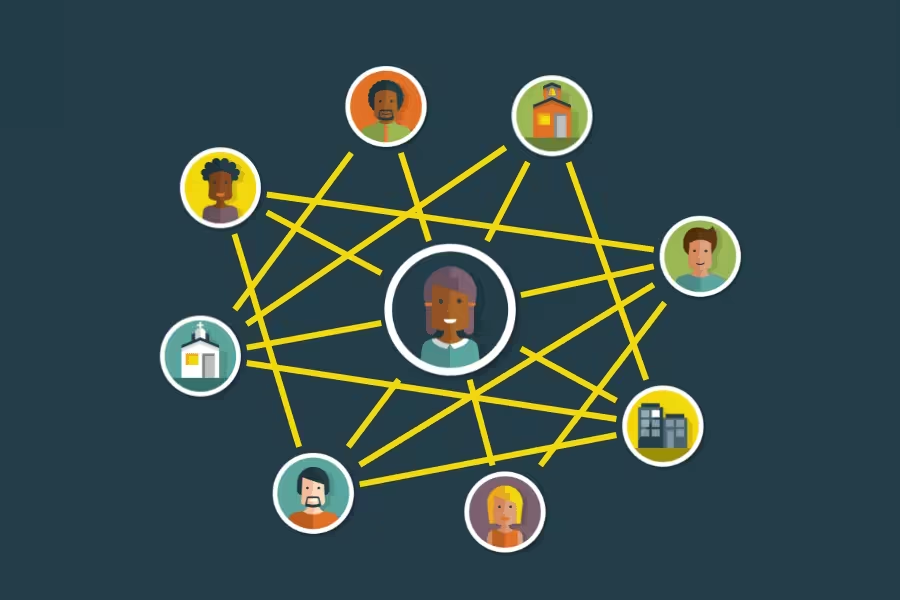Efficient interdepartmental collaboration is a hallmark of successful businesses. One tried and tested method of fostering this collaboration is through the use of relationship mapping software. In this article, we will delve into the realm of relationship mapping, discussing its basics, merits in improving interdepartmental collaboration, key features for team success, and its implementation steps.
Understanding the Basics of Relationship Mapping Software
At its core, relationship mapping software is a digital tool that visually portrays relationships and interactions among people within a company. It lays out connections like wiring, providing insight into the complex web woven by interpersonal relationships in a business landscape.
The value of relationship mapping software, however, goes far beyond this visual depiction. By unraveling the lines of communication and authority, not only does it provide a snapshot of the existing company structure, but it also uncovers hidden opportunities for collaboration--opportunities that, when exploited, can significantly boost productivity.
This software aids in understanding how information flows within an organization, the influencers, and the decision-making processes. The insight provided by relationship mapping tools can be instrumental in developing strategies for effective interdepartmental collaboration.
Moreover, relationship mapping software can help identify existing gaps and bottlenecks in communication. By highlighting these gaps, it allows firms to take proactive measures in bridging them, thus ensuring smoother, more efficient operations.
Role of Relationship Mapping in Enhancing Interdepartmental Collaboration
Relationship mapping is a critical lever in the quest for exhaustive interdepartmental collaboration. This tool allows companies to understand who communicates with whom and how information filters through the organization, the insight that forms the bedrock of effective collaboration.
The software can unearth hidden connections among employees and departments—connections that can be leveraged to stimulate collaboration. Understanding these synergies can lead to the formulation of more effective team structures and improved workflow strategies.
Furthermore, relationship mapping can bring to light any silos that may exist within an organization. Once identified, companies can take necessary initiatives to dismantle these silos and foster a more inclusive and collaborative environment.
As it reveals the information flow pattern, an organization can strategically connect departments to ensure a more dynamic and efficient sharing of knowledge, thus enhancing overall productivity.
Key Features of Relationship Mapping Software for Team Success
For a team to extract maximum benefits from relationship mapping tools, certain crucial features need to be present in the software. Visually appealing and intuitive maps are a must. These graphs should be easily traversable, clearly depicting relationships between individuals, teams, and departments.
Search functionality is another crucial feature. It enables users to find desired connections quickly, improving ease of use and saving time. The ability to highlight influential individuals and understand their connections, roles, and impact on the organization can provide teams with a deeper level of insight.
Furthermore, modern relationship mapping software should provide actionable insights based on the data analysis. These recommendations can help companies make informed decisions about team structures, workflow optimizations, and fostering collaboration.
Customer support is another crucial consideration. A strong support system ensures smooth software operation and means issues are addressed promptly, ensuring efficiency.
Implementing Relationship Mapping Software: Steps Towards Better Collaboration
Deploying relationship mapping software begins with understanding specific organizational objectives and challenges. This understanding directly influences the selection of the right software, one whose capabilities align most closely with those goals and hurdles.
Once the software is selected, it's time to roll out implementation. This typically starts with assembling a dedicated implementation team responsible for handling the software setup, customization, and training processes. It's important to ensure that employees are equipped to effectively use this software.
Performance tracking is integral in the post-implementation phase. By continuously measuring the effectiveness and impact of the software, organizations can make necessary adjustments, thus ensuring that the software remains beneficial and effective over time.
The final step is adjustment and further customization. Every tool requires a set of adjustments after the initial implementation, and relationship mapping software is no exception. Given the ever-changing dynamics of organizations, continuous updates, and customizations become necessary to accommodate organizational evolution.
Overall, relationship mapping software offers immense potential to enhance collaboration within organizations. By understanding its capabilities, companies can harness this tool to shine a light on communication paths, tap into hidden opportunities, dismantle silos, and foster environments that trump collaboration and productivity. Now is the time to step into the future of organizational management.



